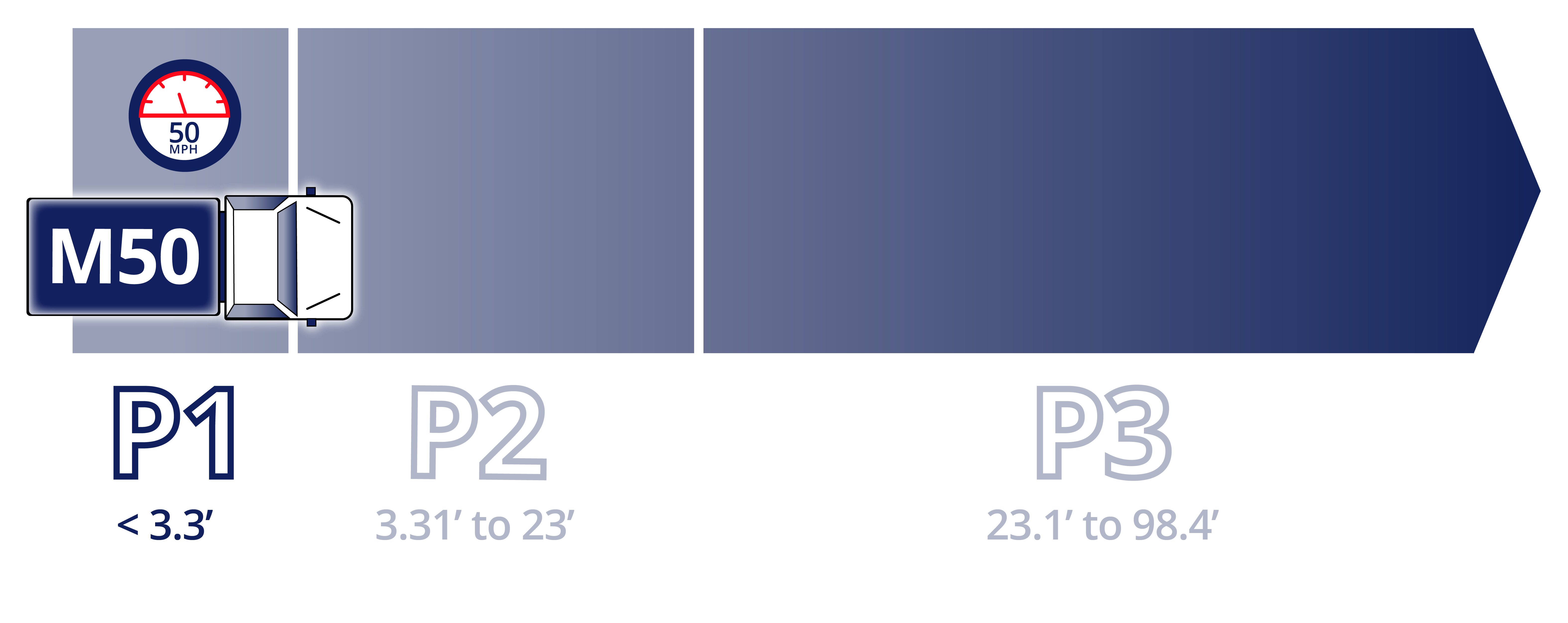Facts About Wedge Barriers Uncovered


18 may be done faster, easily, and cost effectively. FIG. In specific embodiments, the anchor 30 might be a steel structure including plates, beam of lights(e. g., I-beams ), and/or other structures that are protected within the structure 14, which may be concrete. At the surface area 12, a top side 28 of the support 30 might go to least partially exposed
, consequently enabling the accessory of the obstacle 10 to the support 30. g., threaded openings)in one or even more light beams or plates of the support 30 may be exposed to the surface 12. In this manner, bolts 32 or other mechanical fasteners may be utilized to secure the obstacle 10 to the anchor 30. As the obstacle 10 is installed to the surface 12 of the structure 14, collection of particles and other material below the barrier might be minimized, and parts of the bather 10 might not be exposed to below quality environments. As suggested by reference numeral 52, the lifting device 50 includes elements disposed underneath the wedge plate 16. The components 52 underneath the wedge plate 16 may include an electromechanical actuator, a camera, one or more web cam surface areas, and so forth. In addition, the training system 50 consists of a spring assembly 54
The spring rod 58 is paired to a cam(e. g., webcam 80 received FIG. 4) of the training device 50. The springs 60 disposed regarding the spring rod 58 are held in compression by spring sustains 62, consisting of a dealt with spring support 64. That is, the set spring support 64 is dealt with about the structure 14 and the remainder of the bather 10.
Facts About Wedge Barriers Uncovered
The staying pressure used to
the cam to deploy release wedge plate 16 may be provided supplied an electromechanical actuator 84 or other actuator. The springtime assembly 54 and the actuator 84(e. Wedge Barriers. g., electromechanical actuator)might run with each other to equate the camera and lift the wedge plate 16.
As mentioned over, the spring setting up 54 exerts a continuous force on the cam, while the electromechanical actuator might be regulated to apply a variable pressure on the web cam, thereby allowing the training and reducing( i. e., releasing and retracting )of the wedge plate 16. In certain embodiments, the constant pressure applied by the springtime assembly 54 may be adjustable. g., electromechanical actuator) is handicapped. As will certainly be valued, the spring setting up 54 may be covered and protected from particles or other components by a cover plate(e. g., cover plate 68 received FIG. 4) that may read the article be substantially flush with the elevated surface area 38 of the foundation 14. As mentioned above, in the deployed placement, the wedge plate 16 offers to obstruct gain access to or travel beyond the obstacle 10. The obstacle 10(e. g., the wedge plate 16 )might block pedestrians or lorries from accessing a residential or commercial property or path. As discussed over, the obstacle 10 is attached to the support 30 protected within the foundation 14,

front brackets 71. As a result, the link assemblies 72 might pivot and turn to make it possible for the collapse and expansion of the link settings up 72 throughout retraction and release of the bather 10. The affiliation assemblies 72 cause movement of the wedge plate 16 to be restricted. For instance, if a vehicle is traveling in the direction of the released wedge plate 16(e. For instance, in one circumstance, the safety legs 86 may be extended throughoutmaintenance of the barrier 10. When the security legs 86 are deployed, the safety legs 86 support the weight of the wedge plate 16 against the surface 12. Because of this, the lifting mechanism 50 may be shut off, serviced, eliminated, replaced, etc. FIG. 5 is partial viewpoint sight of a personification of the surface-mounted wedge-style barrier 10, illustrating the cam 80 and the camera surface areas 82 of the lifting mechanism 50. Particularly, 2 webcam surface areas 82, which are described as reduced web cam surfaces 83, are positioned below the camera 80. The lower web cam surfaces 83 may be repaired to the surface area 12 (e. For example, the lower web cam surfaces 83 and the mounting plate 85 may create a solitary item that is protected to the anchor 30 by screws or various other mechanical fasteners. Furthermore, two web cam surfaces 82, which are described as top webcam surfaces 87, are placed above the cam 80 and combined to (e. In various other personifications, interfering layers or plates might be positioned between the surface area 12 and the lower webcam surfaces 83 and/or the useful link wedge plate 16 and the top web cam surfaces 87 As stated over, the cam
80 translates along the cam surfaces 82 when the wedge plate 16 is raised from the withdrawed position to the deployed setting. Furthermore, as stated above, the springtime assembly 54 (see FIG. 3 )might provide a force acting upon the webcam 80 in the direction 102 via springtime rod 58, which might minimize the pressure the electromechanical actuator 84 is required to use to the webcam 80 in order to activate and lift the wedge plate 16. 1 )to the released placement(see FIG. 4). As shown, the camera 80 includes track wheels 104(e. g., rollers), which call and convert along the webcam surfaces 82 during procedure.